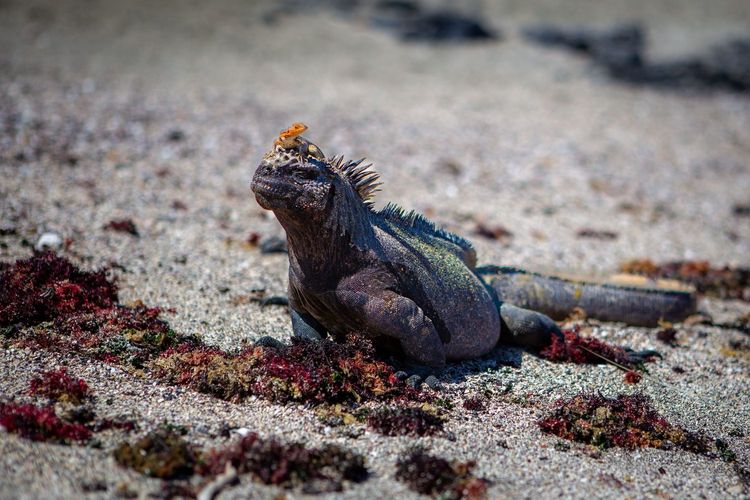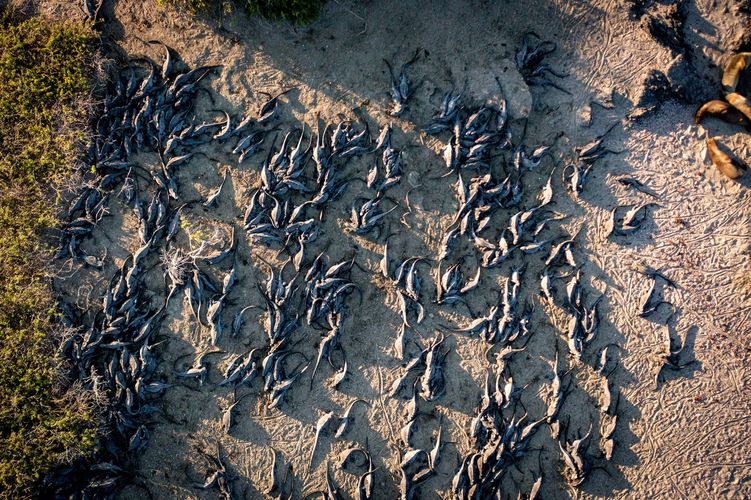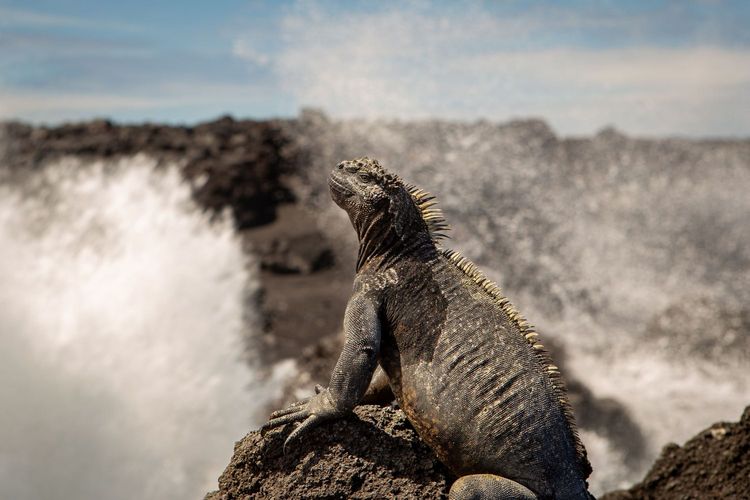Reaching otherwise inaccessible places with drones
“Using drones gives us access to many places that were previously inaccessible. There is no need to land boats on these remote islands, which – even if possible – is usually very dangerous due to rough seas and sharp rocks,” said zoologist Dr Amy MacLeod from Leipzig University, who is in charge of the campaign. The team of six first spent a week on the Ecuadorian mainland learning how to use drones. The photographs will give the researchers an overview of how many marine iguanas still live on the islands and where exactly they can be found. Doctoral researcher Denisse Dalgo led the second project, which aims to shed light on the diet and basic physical traits, such as body length and weight, of these rare animals.
“It will take a while to count the iguanas from the pictures. But we have already seen that the subspecies of marine iguana found on Marchena Island seems to be much rarer than expected,” said MacLeod – an important finding from a conservation point of view. On the other hand, more iguanas than expected have been found in some places – for example on the very remote islands of Darwin and Wolf. “Since these islands are rarely visited by researchers and it is very difficult to catch iguanas there, they have not been sampled often in the past and have therefore remained something of a mystery,” said the biologist. She added that the researchers fortunately obtained a sufficient number of samples during the expedition, and are now eager to see what stories they tell them about this geographically isolated subspecies.
Citizen science project: Anyone interested can participate
A citizen science project has just begun, in which interested amateurs are being asked to count the iguanas accurately. Outlining the goal of the project, MacLeod said: “This could allow us to evaluate our data more quickly in the future, repeat population size surveys more often, and ultimately monitor this threatened species properly.” The amateur scientists’ results will also be incorporated into a training set for machine learning: the researchers want to investigate whether artificial intelligence can also be used to count iguanas. Ultimately, they plan to search for the most reliable and efficient way to record iguanas using aerial photographs. This method can then be used in the future by local conservation managers to make their work easier, faster and safer.
The count is open to everyone. The project is hosted by the world’s largest citizen science platform, Zooniverse. Anyone who wants to be part of the count can simply create a user account and select the “Iguanas from Above” project. A tutorial explains how the project works. The researchers are also collecting data on other species that appear frequently in the photographs, such as Galápagos sea lions and various seabirds. “We think this new phase will be fun for the volunteers because they will be counting iguanas from Española and Floreana – these are the ‘Christmas iguanas’ known for their bright colours,” said the biologist. The entire project is scheduled to run until 2025.
A big problem in the Galápagos Islands is plastic waste: “Since we are worried about this and we could clearly see the plastics in our images, we contacted other researchers to work together on using our drone images to study plastics,” said zoologist Dr Amy MacLeod. Volunteer scientists can also help with this. MacLeod pointed out that it is important to know where the plastic comes from and where it ends up, so as to address both the source and the result of the problem. The data will also be used for targeted clean-ups that remove plastic from places where it poses a threat to wildlife.
Habitat threatened by locals and tourism
It is not known exactly how many marine iguanas still exist, as estimates vary widely and the animals are found in many hard-to-reach places in the archipelago. This is why there has never been a complete survey of this species. “Our ultimate goal is therefore to produce accurate and detailed counts for each of the eleven subspecies,” said MacLeod. Marine iguanas are very common on some islands, yet very rare on others. Most islands have their own subspecies that need to be protected separately. They have never been successfully kept in captivity. If they were to become extinct in the Galápagos, this species would no longer exist. According to the expert, the growing number of inhabitants and tourists on the archipelago poses a threat to the animals. This increases the likelihood of associated threats such as water pollution and habitat loss due to building projects. In recent decades, there have been several oil spills that can be fatal to marine iguanas. Pollution from plastic debris from the Pacific Ocean is also a major problem. In addition, humans have brought many non-native species such as cats, dogs, rats and insects to the islands, some of which are threatening local species as a result of predation, competition and parasitism. Finally, climate change is also altering these fragile and finely balanced natural systems.


